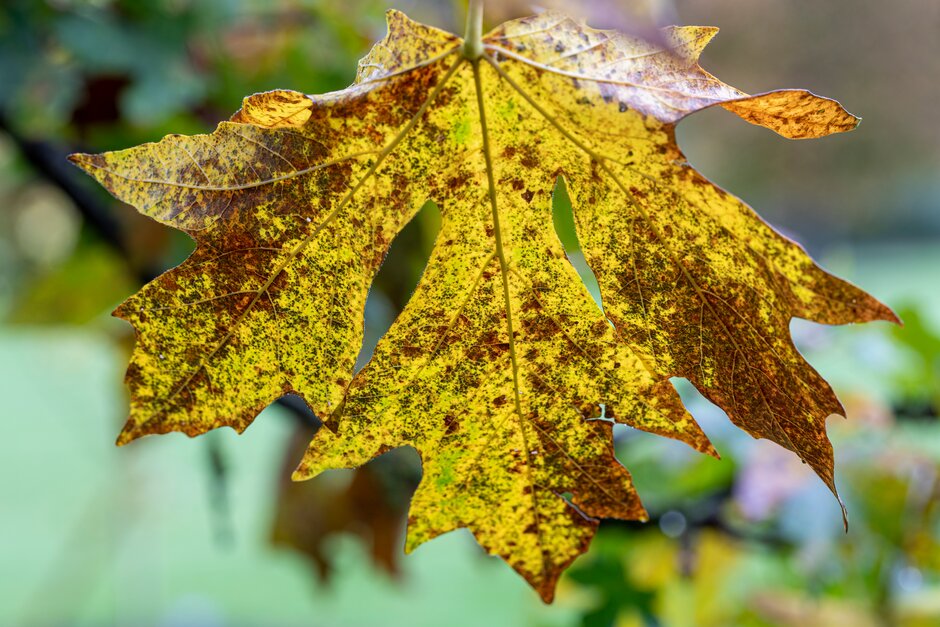Acer macrophyllum
Oregon maple
A large, round-headed tree with deeply-lobed, dark green leaves up to 30cm across that turn shades of orange and yellow in autumn. Small, fragrant, yellowish-green flowers are borne in drooping clusters 10-20cm long in spring and followed by bristly, winged fruit
Size
Ultimate height
Higher than 12 metresTime to ultimate height
20–50 yearsUltimate spread
Wider than 8 metresGrowing conditions
Moisture
Moist but well–drained, Well–drainedpH
Acid, Alkaline, NeutralColour & scent
| Stem | Flower | Foliage | Fruit | |
| Spring | Yellow Green | Green | ||
|---|---|---|---|---|
| Summer | Green | |||
| Autumn | Yellow Orange | |||
| Winter |
Position
- Full sun
- Partial shade
Aspect
East–facing or North–facing or South–facing or West–facing
Exposure
Exposed or Sheltered Hardiness
H6Botanical details
- Family
- Sapindaceae
- Native to GB / Ireland
- No
- Foliage
- Deciduous
- Habit
- Bushy
- Genus
Acer can be deciduous trees or large shrubs with paired, often palmately-lobed leaves and small flowers followed by characteristic winged fruits. Many have fine autumn colour, and some have ornamental stems
- Name status
Correct
How to grow
Cultivation
Grows best in a moist but well-drained soil in full sun or partial shade but will tolerate a wide range of conditions
Propagation
Propagate by seed
Suggested planting locations and garden types
- Low Maintenance
Pruning
Pests
May be susceptible to Acer gall mite, aphids, caterpillars and horse chestnut scale
Diseases
May be susceptible to Verticillium wilt, Acer leaf scorch and honey fungus
Get involved
The Royal Horticultural Society is the UK’s leading gardening charity. We aim to enrich everyone’s life through plants, and make the UK a greener and more beautiful place.
